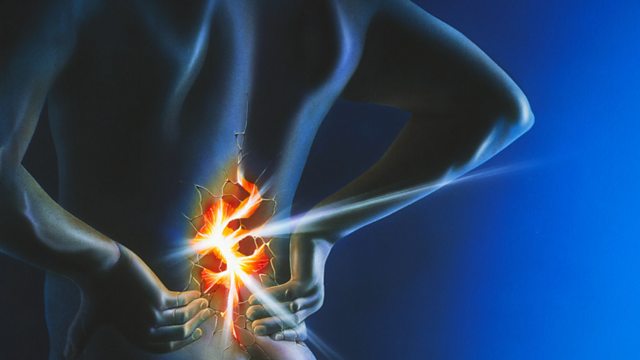Lower Back Pain
Why lower back pain affects more people than any other condition: New technologies to combat drug-resistant TB in South Africa; Circular arguments and how small kids weight them
Low back pain is pain at the bottom of the back. It can sometimes spread to the top of the leg when it is known as lumbago or sciatica. We know that back pain bad enough to affect what you do is very common. But for the first time it has been looked at in a comprehensive way. The 2010 Global Burden of Disease Study assessed the prevalence of back pain and the impact it has on people in 187 different countries and the findings have just been published in the Annals of Rheumatic Diseases. Professor Tony Woolf, from the Royal Cornwall Hospital in the UK and co-author of the paper outlines the main findings.
South Africa TB trial
The rise of drug-resistant bacteria is preventing the control of numerous diseases worldwide, including tuberculosis or TB. The most extensive form of resistance is known as extensively drug-resistant tuberculosis, which has now been reported in 92 countries worldwide.
In some countries like South Africa, resistance has progressed so far that in some cases, doctors have run out of treatment options and patients are being sent home into their communities without treatment. Drug-resistant TB consumes more than a third of the total national budget for TB, which is unsustainable and threatens to destabilise national TB programmes. South Africa is one of only two countries worldwide where the incidence of TB is continuing to rise.
In an attempt to curtail the spread, a team at the University of Cape Town in South Africa is using new technologies to investigate how the return of patients to their communities is affecting transmission of the airborne disease. The ΒιΆΉΤΌΕΔβs Meera Senthilingam has been in Cape Town to see the trial in action.
Circular Arguments
A circular argument is an argument which restates the original premise as proof of its validity, and new research from Switzerland suggests that three- year-olds might be less accepting of these kinds of false arguments than children who are a little bit older. The children in the study were told a story about a girl trying to find her lost dog. Two people gave her advice about where to look, one of whom said they had seen where the dog went; a strong argument, while the other said βit went that way because it went that wayβ; the circular argument. So what can their findings tell us about the way children of different ages think? The author of the research Dr Hugo Mercier, from the University of Neuchatel in Switzerland, tells Health Check.
(Photo: Artwork showing back pain. Credit: Science Photo Library)
Last on
More episodes
Previous
Chapters
-
Lower back pain
The global burden
Duration: 09:42
Drug-resistant TB in South Africa
New technologies are being trialled to combat tuberculosis
Duration: 10:02
Circular arguments
How pre-school children weight them
Duration: 05:50
Broadcasts
- Wed 26 Mar 2014 20:32GMTΒιΆΉΤΌΕΔ World Service Online
- Thu 27 Mar 2014 02:32GMTΒιΆΉΤΌΕΔ World Service Online
- Thu 27 Mar 2014 09:32GMTΒιΆΉΤΌΕΔ World Service Online
- Sun 30 Mar 2014 04:32GMTΒιΆΉΤΌΕΔ World Service Online
Podcast
-
![]()
Health Check
Health issues and medical breakthroughs from around the world.


